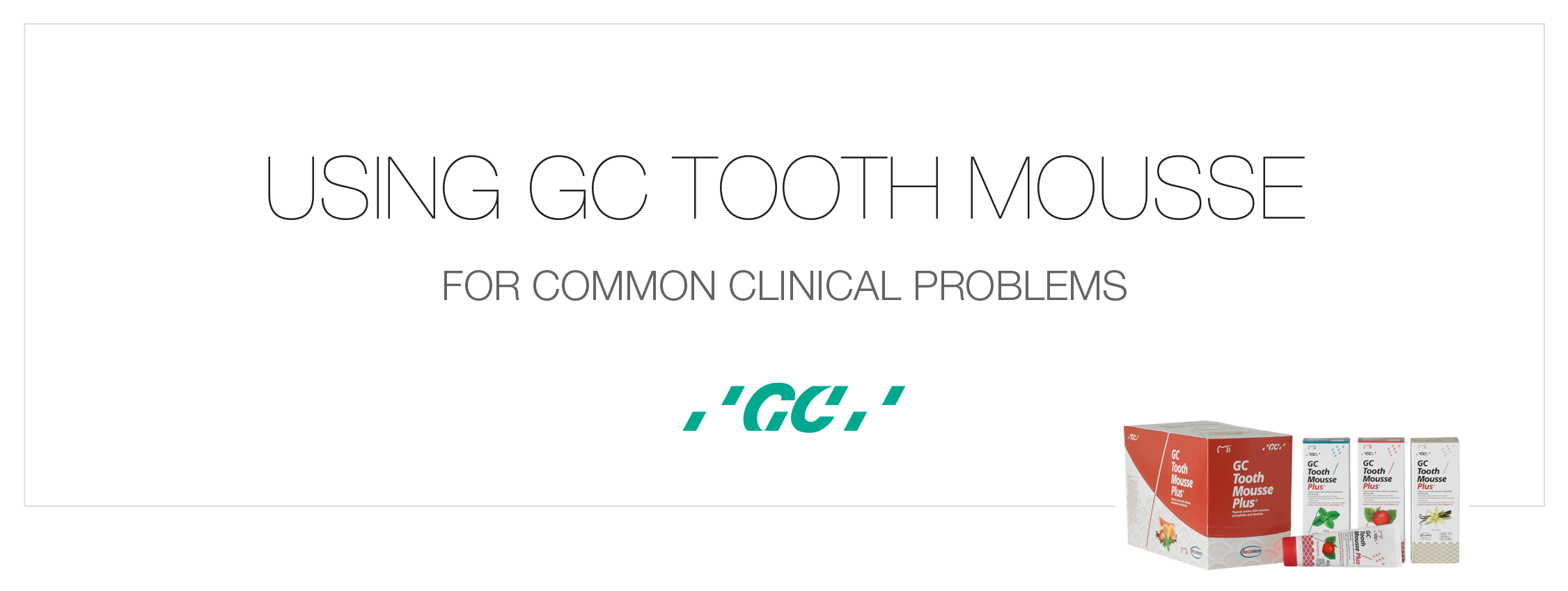
GC Tooth Mousse (TM) and
Tooth Mousse Plus (TMP) are amongst the most well researched dental products today, with an evidence base of over 150 journal papers and 7 systematic reviews. This article summarises the most common applications that involve daily use of these products, applied with a clean finger or brush onto the teeth just before bed.
For infants and young children, TM reduces colonisation of the mouth by cariogenic Streptococcus mutans bacteria, with a corresponding rise in health-associated oral bacteria such as Strep. sanguinis and Strep. salivarius, and lowered acid production by dental plaque. TM increases mineral levels in primary teeth affected by molar-incisor hypomineralisation, or developmental defects of enamel.
In patients undergoing orthodontic treatment, TMP is more effective for preventing the development of enamel lesions around brackets than conventional fluoride products. It is highly effective for reversing active white lesions in orthodontic patients.
For high caries risk adults, both active and arrested enamel carious lesions can be reversed. Arrested lesions require a pre-treatment (such as short acid etch) to enhance porosity. Likewise, developmental enamel defects and fluorosis in permanent teeth can be reversed back to a normal appearance. For fluorosis, a longer acid etch pre-treatment (2 minutes with agitation) is needed, with enamel microabrasion to remove surface stains and enhance penetration.
Tooth Mousse is highly effective for treating sensitive exposed cervical dentine, by laying down an acid-resistant layer of mineral, even in patients with poor salivary flow or gastric reflux.
In tooth wear cases, TMP will remineralise tooth structure substrate prior to bonding adhesive materials. In patients having home bleaching using peroxide gels, TMP will treat tooth sensitivity from exposed root surfaces.
It will also cause an enamel lightening effect which reduces the yellow colour of teeth.
In older patients, TM and TMP will arrest lesions of root surface caries where the root surface has softened but not yet cavitated.
They can also be applied in a smear on overdentures and partial dentures to help protect abutment teeth from caries.
Local application of TMP onto glass ionomer cement restorations that contain CPP-ACP (e.g. Fuji VII EP) will recharge the reservoir of these materials so that they can continue to release bio-available calcium, phosphate and fluoride ions.
Long term daily application of TM and TMP can also reduce the likelihood of patients with dry mouth developing tooth wear or dental caries, but combined chemical actions and biological (prebiotic) effects.